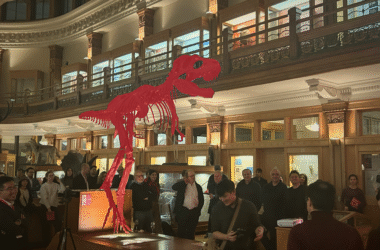Indigenous communities, particularly First Nations, Inuit, and Métis women, face unique and significant challenges in accessing equitable healthcare during pregnancy and childbirth. Historical and ongoing disparities in healthcare access and quality, mistreatment and abuse of Indigenous people in colonial healthcare systems, lack of healthcare services in remote communities and northern Canada, and cultural disconnection all present barriers to Indigenous mothers getting vital and appropriate care before, during, and after pregnancy.
New healthcare initiatives are emerging to address these inequities by promoting the importance of culturally safe care and Indigenous-led approaches.
Hilah Silver, a postdoctoral researcher in the Department of Family Medicine and a registered nurse at the McGill University Health Centre, is focusing on improving Indigenous maternal healthcare. Her work as a nurse places her at the forefront of patient care, where she often communicates with Indigenous mothers and their hospital liaisons.
Currently, major issues Indigenous women face when accessing maternal healthcare include the lack of culturally appropriate care, geographical isolation, and the practice of maternal evacuation, where women are relocated to urban hospitals for childbirth.
As part of a recent study intended to address these healthcare disparities, Hilah implemented four interventions designed with the active participation of Indigenous stakeholders. These measures reflect the principles of cultural safety and provide a model for improving healthcare outcomes for those who face inevitable maternal evacuation.
Maternal evacuation is especially common for those who live in isolated communities, such as the Nunavik region, that do not have hospitals and professionals who can perform surgeries. This separation of women from their families and communities during such a critical and difficult time often results in isolation, trauma, and stress for both new mothers and their communities.
“When I spoke with the Indigenous participants for this research, it became very clear quickly that maternal care serviced in our hospitals often lacks consideration of how to work for Indigenous families, especially those who are forcibly relocated for their birth appointments,” Hilah said in an interview with The Tribune.
Cultural safety goes beyond mere cultural awareness or sensitivity. It means creating an environment where Indigenous patients feel respected, valued, and understood. This requires acknowledging the cultural identities, histories, and practices of Indigenous peoples and weaving these elements into their care.
A comprehensive approach to improving maternal healthcare for Indigenous women involved a series of culturally informed interventions, each designed to address specific needs. One such initiative was an Indigenous-led cultural safety training program for nurses and hospital staff. Indigenous midwives created a training program that used online presentations and hands-on sessions to teach healthcare providers how to deliver respectful and culturally appropriate care.
Additionally, hospitals adopted an expanded family visitor policy, allowing multiple family members to be present during childbirth. This policy change recognized the importance of familial support in reducing stress and fostering emotional connection for mothers during their hospital stay.
Other measures focused on creating a more welcoming and culturally resonant environment for Indigenous families. Hospitals ensured access to traditional foods, which provided a sense of comfort and familiarity, thereby enhancing well-being during their stay.
Furthermore, the hospitals allowed the incorporation of perinatal traditions, such as sacred medicines and ceremonies, into the childbirth experience. These efforts collectively empowered mothers, honoured their traditions, and fostered a sense of dignity during a critical life event.
This study prioritized Indigenous voices by involving stakeholders in its design and implementation. Its participatory approach took into account the historical and sociopolitical realities that have shaped Indigenous healthcare experiences, ensuring that services were responsive to the specific needs and cultural contexts of the communities they serve.
“At first, I was worried that there would be limited participants for this study. But I think our clear goals of pursuing this research solely to enhance cultural appreciation and consideration in maternal care intrigued them to actively work with us,” Hilah said.
Given the challenges Indigenous women face in accessing healthcare, there is an urgent need to work collectively towards mitigating health inequities by engaging their perspectives in the development of healthcare interventions tailored to their specific needs.






